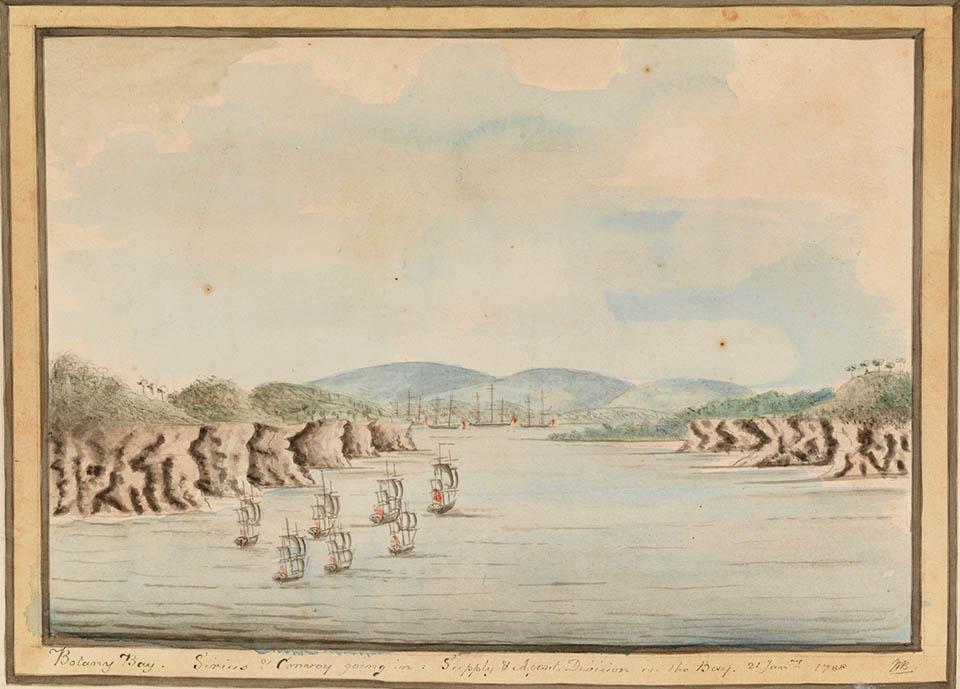The Dictionary of Sydney was archived in 2021.
Botany Bay. Sirius & Convoy going in : Supply & Agents Division in the Bay, 21 January 1788

From the collections of the
(Drawings from his journal `A Voyage to New South Wales', 1802+)

